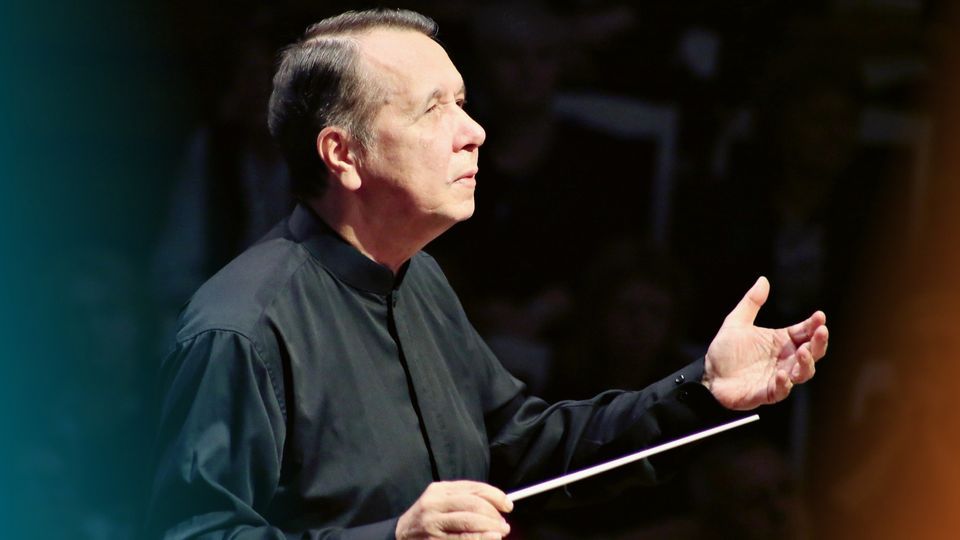Mihail Pletnyov és a Concerto Budapest
Schedule
Wed May 03 2023 at 07:30 pm
Location
Müpa Budapest | Budapest, BU

Advertisement
---SCROLL DOWN FOR ENGLISH---SIBELIUS: Pelléas és Mélisande, op. 46
SIBELIUS: d-moll hegedűverseny, op. 47
- szünet -
RACHMANINOV: A holtak szigete, op. 29
SZKRJABIN: Az eksztázis költeménye, op. 54
Közreműködik: Abouzahra Amira hegedű
Concerto Budapest
Vezényel: Mihail Pletnyov
Bár Finnország és Oroszország kapcsolata finoman szólva is ritkán volt mentes a konfliktusoktól, a világhírű zongoraművész-karmester, Mihail Pletnyov és a Concerto Budapest hangversenye bebizonyítja, hogy a két nemzet zenéje, kultúrája igenis jól megfér egymás mellett, ráadásul a koncerten elhangzó művek, Sibelius, Rachmaninov és Szkrjabin legtermékenyebb időszakának darabjai épp a századfordulón, a 20. század első évtizedének második felében keletkeztek.
A svéd anyanyelvű, hosszú életű Jean Sibelius a finnek legnagyobb nemzeti zeneköltője volt, akit már életében hatalmas megbecsültség, sőt kultusz övezett, hazájának kultúrája által ihletett művei a fin de siècle és a 20. század első felének egyik legeredetibb nemzeti zeneszerzőjévé tették őt. A mai koncerten elhangzó művei azonban nem a finn hagyományból merítettek, hiszen 1905-ös kísérőzenéje Maeterlinck drámájához, a Pelléas és Mélisande-hoz készült, ebből született a kilenc tételes szvit, egyik legnépszerűbb koncertdarabja. A Sibelius-életmű leggyakrabban játszott kompozíciója azonban mégsem ez, hanem eggyel későbbi opusa, az 1904-ben írt, egy évvel később revideált concerto, a d-moll hegedűverseny. A szenvedélyes versenyműnek magyar vonatkozása is van, hiszen az átdolgozott változat címzettje az akkor tizenkét éves csodagyerek, Vecsey Ferenc volt. Sibelius Hegedűversenye ma már kötelező repertoárdarab valamennyi hegedűs számára, a szólót ezúttal egy ugyancsak nagyon fiatal muzsikus, a 2005-ben született egyiptomi-magyar Abouzahra Amira játssza, aki szintén tizenkét esztendős volt, amikor 2017-ben megnyerte a Virtuózok tehetségkutatót. A hangverseny második részének szerzői és művei több ponton kapcsolódnak egymáshoz: Szergej Rachmaninov és Alekszandr Szkrjabin osztálytársak voltak, majd egymástól merőben eltérő zenei nyelvet alakítottak ki. Az Arnold Böcklin festménye, jobban mondva annak fekete-fehér reprodukciója által inspirált szimfonikus költemény, A holtak szigete 1908-ban keletkezett. A Dies irae dallamát is feldolgozó kompozíció után egy ugyancsak 1908-ban befejezett mű, a szinesztéta – vagyis a hangokhoz színeket társító – Szkrjabin egyik legjelentősebb alkotása, Az eksztázis költeménye szólal meg, mely a szerző híres misztikus akkordját használja, és amely a komponista szerint a „felszabadult cselekvés öröme”.
---------------------------------------
Mikhail Pletnev and Concerto Budapest
SIBELIUS: Pelléas and Mélisande, op. 46
SIBELIUS: Violin Concerto in D minor, op. 47
- intermission -
RACHMANINOV: The Isle of the Dead, op. 29
SCRIABIN: The Poem of Ecstasy, op. 54
Amira Abouzahra violin
Concerto Budapest
Conductor: Mikhail Pletnev
Although relations between Finland and Russia were, to put it mildly, rarely free of conflict, this concert featuring world-famous pianist-conductor Mikhail Pletnev and Concerto Budapest is solid proof that the music and culture of the two nations sit quite happily alongside each other, and what is more, the works performed at the concert are pieces from the most fertile periods of Sibelius, Rachmaninov and Scriabin all dating from the turn of the century.
Swedish-speaking Jean Sibelius who lived to a ripe old age was the greatest national musician of the Finns, who enjoyed huge respect, indeed near cult status in his lifetime, and his works inspired by the culture of his homeland made him one of the most original national composers of the fin de siècle and first half of the 20th century. However, the two works heard in today’s concert do not draw on Finnish traditions since his 1905 incidental music was made for the Maeterlinck drama, Pelléas et Mélisande, from which came the nine-movement suite, one of his most popular concert works. On the other hand, this is not the most frequently performed composition of the Sibelius oeuvre; that title goes to his next opus, the D minor violin concerto written in 1904 and revised a year later. The passionate concerto also has a Hungarian connection: the dedicatee of the reworked version was the then 12-year-old wunderkind, Ferenc Vecsey. Today, Sibelius’s Violin Concerto is a mandatory repertory piece in the armoury of all violinists, and on this occasion the solo is played by the similarly youthful musician (born in 2005), Egyptian-Hungarian Abouzahra Amira, who was also 12 when he won the 2017 Virtuózok talent show. Composers and works appearing in the second half of the concert are linked in several ways: Sergei Rachmaninov and Alexander Scriabin were classmates before they developed wildly different music approaches. The Isle of the Dead, the symphonic poem inspired by the painting by Arnold Böcklin, or more accurately its reproduction in black and white, dates from 1908. After the composition also working up the Dies irae melody, there is another work similarly completed in 1908, one of the most important pieces – Poem of Ecstasy – by Scriabin, the synesthete, a person associating colours to sounds, which uses the composer’s famous mystic chord and which, according to the artist, is “the joy of liberated action”.
Advertisement
Where is it happening?
Müpa Budapest, Komor Marcell utca 1., Budapest, HungaryEvent Location & Nearby Stays:
